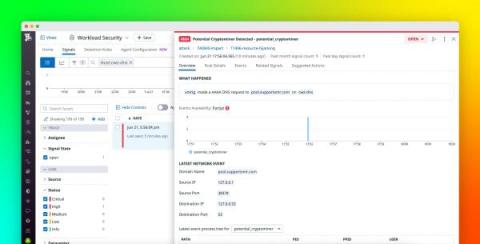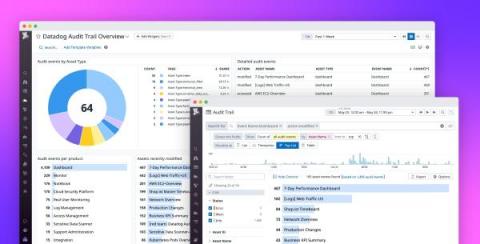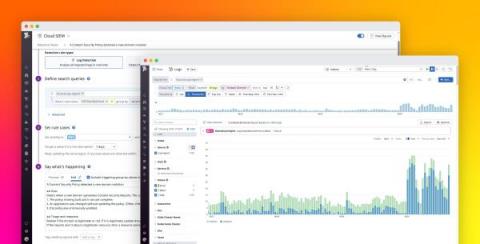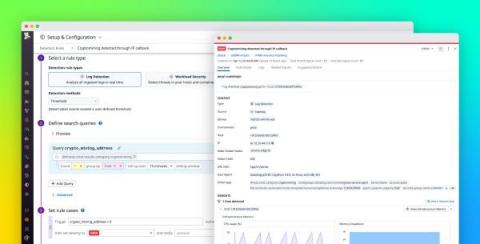Security | Threat Detection | Cyberattacks | DevSecOps | Compliance
Datadog
Identify security vulnerabilities with DNS-based threat detection
The Domain Name System (DNS) is responsible for mapping client-facing domain names to their corresponding IP addresses, making it a fundamental element of the internet. DNS-level events provide valuable information about network traffic that can be used to identify malicious activity. For instance, monitoring DNS lookups can help you see whether a host on your network attempted to connect to a site known to contain malware.
Ensure compliance, governance, and transparency across your teams with Datadog Audit Trail
In order to maintain compliance, enforce governance, and build transparency, teams across your organization need deep insight into how their users and automation interact with Datadog. For stakeholders in leadership roles, such as CIOs and CDOs, knowing what actions users took and when is essential for spotting gaps in enablement, budgeting, and reporting, as well as building a modern compliance strategy for the organization as a whole.
The Confluence RCE vulnerability (CVE-2022-26134): Overview, detection, and remediation
On May 31, 2022, a critical vulnerability in Atlassian Confluence Server and Confluence Data Center was disclosed by Volexity. While conducting an incident response investigation involving internet-facing servers with the Confluence server installed, Volexity determined that the servers were compromised and attackers were launching successful remote code execution (RCE) exploits.
Monitor Content Security Policy violations with Datadog
Content Security Policy (CSP) is a W3C standard that helps defend web applications against cross-site scripting (XSS), clickjacking, and other code injection attacks. CSP is often deployed by using an HTTP header (or, less commonly, a element) to specify which types of resources are allowed to load on your site and where those resources can come from.
Datadog on Detecting Threats using Network Traffic Flows
Security Is Everyone's Job - Linux Vulnerabilities in Production Infra (Nick Davis)
Recapping Datadog Summit Denver 2022
After a two-year hiatus, Datadog customer summits are back. And what better place to begin in-person again than in sunny Denver, Colorado!
Detect cryptocurrency mining in your environment with Datadog Cloud SIEM
Cryptocurrency mining (or crypto mining) can be a lucrative yet resource-intensive operation, so cyber threat actors are targeting more organizations in order to take advantage of their cloud resources for mining. Datadog Cloud SIEM can now help you monitor your cloud-based systems for unwanted crypto mining via a built-in detection rule. All you need to get started is to configure your resource logs with Datadog’s @network.client.ip standard attribute.
Introducing Datadog Application Security Monitoring
Securing modern-day production systems is expensive and complex. Teams often need to implement extensive measures, such as secure coding practices, security testing, periodic vulnerability scans and penetration tests, and protections at the network edge. Even when organizations have the resources to deploy these solutions, they still struggle to keep pace with software teams, especially as they accelerate their release cycles and migrate to distributed systems and microservices.











